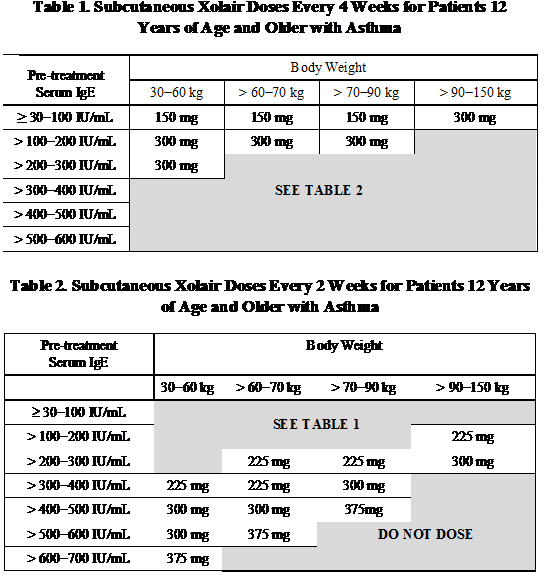Reviewed By Allergy, Immunology & Inflammation Assembly
Submitted by
David R. Stukus, MD
Section of Allergy and Immunology
Nationwide Children’s Hospital
The Ohio State University College of Medicine
Columbus, Ohio
Submit your comments to the author(s).
History
A 45-year-old Caucasian woman was referred by her primary care physician for evaluation and treatment recommendations for poorly controlled asthma. She was initially diagnosed with asthma as an adolescent and has a history of recurrent severe exacerbations requiring ten hospitalizations and greater than twenty emergency department visits throughout her life. Her last hospitalization occurred three months ago. Triggers for severe exacerbations include changes in the weather pattern, exposure to chemical irritants such as cigarette smoke and perfumes, and indoor and outdoor allergens. Despite her history of severe exacerbations, she denies chronic daytime symptoms, with albuterol use less than twice a week, nocturnal awakenings no more than once a month, and no exercise restrictions.
This patient also has a history of seasonal and perennial allergic rhinitis with symptoms including chronic nasal congestion, rhinorrhea, postnasal drip and intermittent itchy, watery eyes. She previously had pets, including dogs and cats, but no longer has exposure to these animals. Additional co-morbidities include intermittent atopic dermatitis affecting her hands and face, and gastroesophageal reflux disease.
Current medications include fluticasone/salmeterol 230/45 mcg 2 inhalations twice daily, montelukast 10 mg once daily, fluticasone nasal spray 2 sprays each nostril once daily, fexofenadine 180 mg once daily, topical pimecrolimus twice daily as needed for atopic dermatitis, and ranitidine 150 mg once daily. She initiated treatment with allergen specific immunotherapy twice in the past, but failed to achieve maintenance dosing on either attempt due to intolerable adverse effects, including anaphylaxis on one occasion.
Physical Exam
On physical examination, vital signs are normal with Spo2 on room air of 98%. Her weight is 58 kg, BMI = 34 kg/cm. Nasal exam reveals significantly enlarged inferior turbinates with pale, bluish, edematous nasal mucosa. Posterior pharynx is mildly erythematous with cobblestoning. Lung exam reveals good aeration throughout all lung fields with clear breath sounds and absence of wheezing. Skin exam reveals erythematous macular eczematous plaques on the dorsum of hands bilaterally with mild lichenification.
Lab
Pulmonary Function Tests
- Spirometry: FEV1- 1.98 L (58% predicted); FVC- 3.13 L (77% predicted); FEV1/FVC- 63.3%; post-bronchodilator studies FEV1- 2.27 L (increase of 13%); FVC- 3.43 L (increase of 10%)
- Fractional Excretion of Exhaled Nitric Oxide (FeNO): 77 ppb
Asthma Control Test = 21
Skin Prick Testing
- Mean wheal diameter > 6 mm observed towards dust mites, cat dander, dog dander, birch, maple, oak, cedar, mulberry, timothy grass, ragweed, alternaria
- Mean wheal diameter < 1 mm observed towards cockroach, mouse, rabbit, guinea pig, horse, cladosporium, penicillium, aspergillus
Total Serum Immunoglobulin E (IgE) Level = 245 IU/mL, complete blood count was normal except for peripheral eosinophil count 625/mm3 (7%).
References
- Presta LG, Lahr SJ, Shields RL, et al. Humanization of an antibody directed against IgE. J Immunol 1993;151:2623-32.
- Schulman ES. Development of a monoclonal anti-immunoglobulin E antibody (omalizumab) for the treatment of allergic respiratory disorders. Am J Respir Crit Care Med 2001;164:S6-S11.
- Strunk RC, Bloomberg SR. Omalizumab for asthma. N Engl J Med 2006;354:2689-95.
- Xolair (omalizumab). San Francisco: Genentech, 2003 (package insert).
- National Heart, Lung, and Blood Institute and the National Asthma Education and Prevention Program. Expert Panel Report 3 (EPR 3): Guidelines for the Diagnosis and Management of Asthma. Available at: http://www.nhlbi.nih.gov/guidelines/asthma/asthgdln.htm. Accessed November 12, 2015.
- Milgrom H, Berger W, Nayak A, Gupta N, Pollard S, McAlary M, et al. Treatment of childhood asthma with anti-immunoglobulin E antibody (omalizumab). Pediatrics 2001;108(2).
- Lanier B, Bridges T, Kulus M, Taylor AF, Berhane I, Vidaurre CF. Omalizumab for the treatment of exacerbations in children with inadequately controlled allergic (IgE-mediated) asthma. J Allergy Clin Immunol 2009;124:1210-6.
- Busse W, Corren J, Lanier BQ, McAlary M, Fowler-Taylor A, Cioppa GD, et al. Omalizumab, anti-IgE recombinant humanized monoclonal antibody, for the treatment of severe allergic asthma. J Allergy Clin Immunol 2001;108:184-190.
- Kim HL, Leigh R, Becker A. Omalizumab: Practical considerations regarding the risk of anaphylaxis. Allergy Asthma Clin Immunol 2010;6(1):32.
- Normansell R, Walker S, Milan SJ, Walters EH, Nair P. Omalizumab for asthma in adults and children. Cochrane Database Syst Rev 2014;1:CD003559.
- Bousquet J, Wenzel S, Holgate S, Lumry W, Freeman P, Fox H. Predicting response to omalizumab, an anti-IgE antibody, in patients with allergic asthma. Chest 2004;125:1378-86.
- Zazzali JL, Raimundo KP, Trzaskoma B, Rosen KE, Schatz M. Changes in asthma control, work productivity, and impairment with omalizumab: 5-year EXCELS study results. Allergy Asthma Proc 2015;36:283-92.
- Maurer M, Rosen K, Hsieh HJ, Saini S, Grattan C, Gimenez-Arnau A, et al. N Engl J Med 2013;368:924-35.
- El-Quotob D. Off-Label uses of omalizumab. Clin Rev Allergy Immunol 2015;Jun 6 (Epub ahead of print). PMID: 26048266.
- Thomson NC and Chaudhuri R. Omalizumab: Clinical use for the management of asthma. Clin Med Insights Circ Respir Pulm Med 2012;6:27-40.
- Bousquet J, Rabe K, Humbert M, Chung KF, Berger W, Fox H, et al. Predicting and evaluating response to omalizumab in patients with severe allergic asthma. Respir Med 2007;101:1483-92.
- Wahn U, Martin C, Freeman P, Blogg M, Jimenez P. Relationship between pretreatment specific IgE and the response to omalizumab therapy. Allergy 2009; 64:1780-7.




